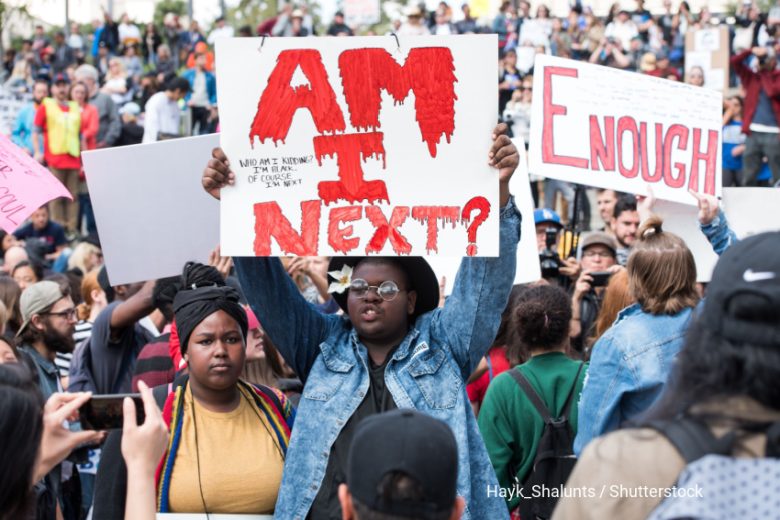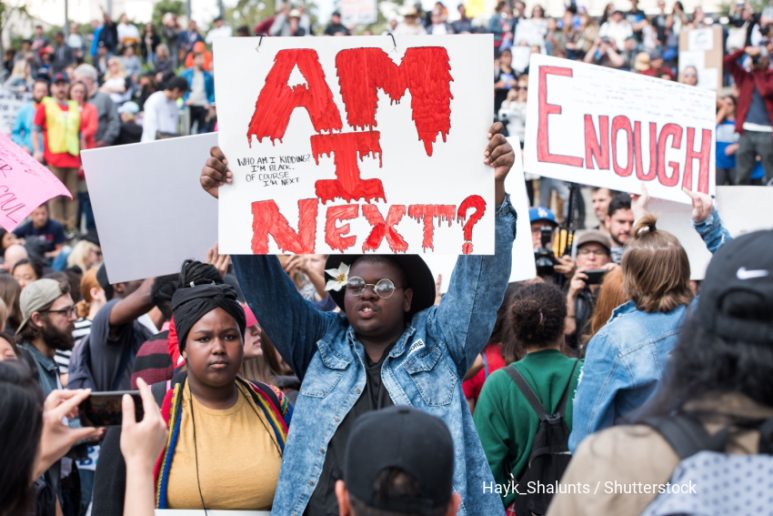By Michael Gaskins
On April 20th, 1999, the American media landscape changed profoundly. That day two teenagers went on a shooting spree killing 13 people at Columbine High School in Littleton, Colorado. I remember this day vividly because I was working as a news producer for one of the television news media stations in the Philadelphia, Pennsylvania, region. Philadelphia is the 4th largest Designated Market Area in the United States, with a television household population of 2,942,800. This shooting took precedence as it was carried live by all national television networks, CNN, MSNBC, Fox News, and many other outlets. Americans have never seen an active shooting crime scene like this before carried live on television. It seemed unreal as my colleagues, and I stood around the newsroom looking at multiple news outlets covering the incident. Since that day, we have seen plenty of images of both school and mass shootings over the years, from the crime scenes at elementary schools in Newtown, Connecticut, Uvalde, Texas, and Nashville, Tennessee, to mass shootings at a Buffalo, New York supermarket shooting, and at a Los Angeles ballroom. Since 1999, the U.S. media has continued to display images and pictures of gun violence. There have been 380 school shootings since Columbine, with more than 352,000 students saying they have experienced gun violence at their school.
Everytown for Gun Safety Support Fund defines a mass shooting as any incident where four or more people are shot, wounded, or killed, excluding the shooter. In 2013, the U.S. Congress defined public shooting events as incidents where three or more people are killed. Everytown for Gun Safety Support Fund is an independent, non-partisan organization dedicated to understanding and reducing gun violence in America. The organization also reports that since 2015, over 19,000 people have been shot, wounded, or killed in a mass shooting. The Washington Post reports that most active shooter incidents happened in high schools, some 60%. In 2022 alone, over 600 people were killed, with over 2,700 wounded. The carnage continues as mass shootings in the U.S. are on a record pace for 2023. ABC News reports, there have been 202 mass shootings so far this year.

There’s a saying about the American television news media, “if it bleeds it leads.” Like clockwork, you can expect media outlets to run continuous videos of the scene, interviews of those impacted, and the all too familiar “continuing coverage” banner to inform viewers to stay with that specific provider to get the latest news. Graphic images are constantly shown throughout the day during the newscasts and regular programming through teases promoting the next newscast. The Marketing Rule of 7 states that a prospect needs to see or hear an advertiser’s message at least seven times before they’ll take action to buy that product or service. The U.S. media employs this because it’s all about ratings and getting as many viewers as possible. That means showing an image over and over and over again to the shock and horror of those who lived through those incidents.
Mass shootings occur worldwide but are a particular problem in the United States. In 2015, the American Sociological Association reported that the U.S. had 5% of the world’s population but had 31% of the world’s mass shootings. The Pew Research Center says the U.S. Federal Bureau of Investigation found an increase in active shooter incidents between 2000 and 2021. There were three such incidents in 2000. By 2021, that figure had increased to 61. The U.S. Concealed Carry Association, an organization dedicated to serving gun owners who want to protect their loved ones responsibly, states on its website that in the U.S., mass public shootings account for less than 0.5% of all gun deaths yearly. Meanwhile, the media has a job to do in covering these shootings, and now the coverage of these events is causing an impact on the psyche of American viewers. Conservative news outlets tend to condemn the shootings but refuse to talk about or cover gun control issues that could relate to the incident. On the other hand, liberal news outlets would talk about gun control from many angles while reporting on these horrific events.
Overseas, on May 3rd, a 13-year-old boy killed at least eight children at Belgrade, Serbia, school, marking the county’s first school shooting. The Serbian media did many things unethically when reporting the news of this tragedy. MDI learned that the Serbian Media shared private information about the suspected shooter, even before the institutions did the same. Journalists violated Serbia’s Law on Personal Data Protection and Law on patients’ rights (including the name of the minor perpetrator, an image of him and his father, his medical records, and insight into perpetuator’s parents’ incomes).
Before the Ministry of Internal Affairs published official information on the number of victims, the media irresponsibly shared speculations on the number of deaths. In contrast, the victims’ families still have not received official information on the health and safety of their loved ones. The media breached the Code of Journalists by interviewing students and parents from this school immediately after the shooting. Unfortunately, what occurred in Serbia is common with how the media operates in the U.S.
Serbian social media showed images, videos, speculations about the event, and harmful comments inciting further violence. Some content contained jokes that idolize the attacker. There is a broader discussion about the number of guns in Serbia (legal and illegal). Still, most mainstream media (tabloid and pro-government) do not tackle the topic apart from quoting the officials.
In the U.S., the Society of Professional Journalists has a code of ethics that all journalists should follow. They say journalists should seek truth and report it, minimize harm, act independently, and be accountable. Many Americans are exhausted with the constant images saying they’re affecting people’s mental health and that television news outlets, and social media platforms should stop showing them. Additionally, the Mass Shooting Contagion theory says media’s coverage of mass shootings can provide potential shooters with a chance of fame, scorecards to compare one another, and even blueprints for carrying out an attack. More recently, an academic study of this theory has grown considering these mass shooting events, the high number of references to previous rampage shooters as source of inspiration, and the acquisition of fame using violence. Researchers claim the Columbine High School incident is a model of would-be copycat mass shooters.
So how should the media report these shootings. The Society of Professional Journalists’ code of ethics goes on to describe just how journalists should carry out their jobs when covering news stories. First, journalists should be honest, fair, and courageous in gathering, reporting, and interpreting information. Second, ethical journalists treat sources, subjects, and colleagues as human beings deserving of respect. Third, journalists should be free of obligation to any interest other than the public’s right to know. Finally, journalists are accountable to their readers, listeners, viewers, and each other. As the violence continues, barriers to change remain. It appears the U.S. Congress may have some challenges reinstating a ban on semi-automatic rifles. Last year, the U.S. Supreme Court set new standards for reviewing the nation’s gun laws, calling firearms restrictions nationwide into question. These factors will probably mean that we will continue to see more shootings over the rest of the year. Unfortunately, it’s a question of when and where. Does that mean the media adjust the way they cover these shootings? Only time will tell, but if we go by what we have seen over the past 24 years, probably not.
Photo Credits: Hayk_Shalunts / Shutterstock

